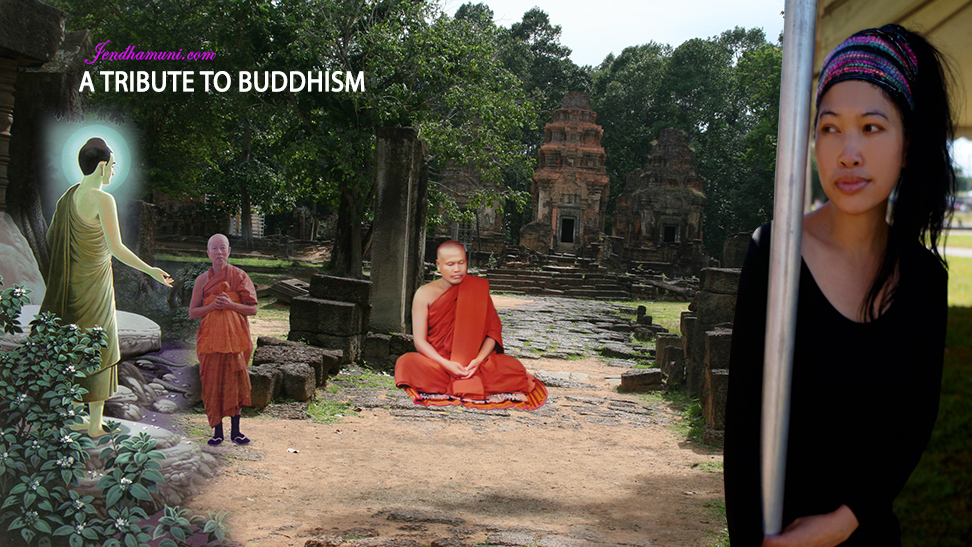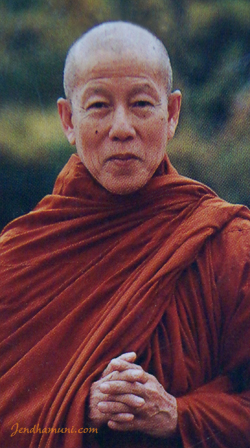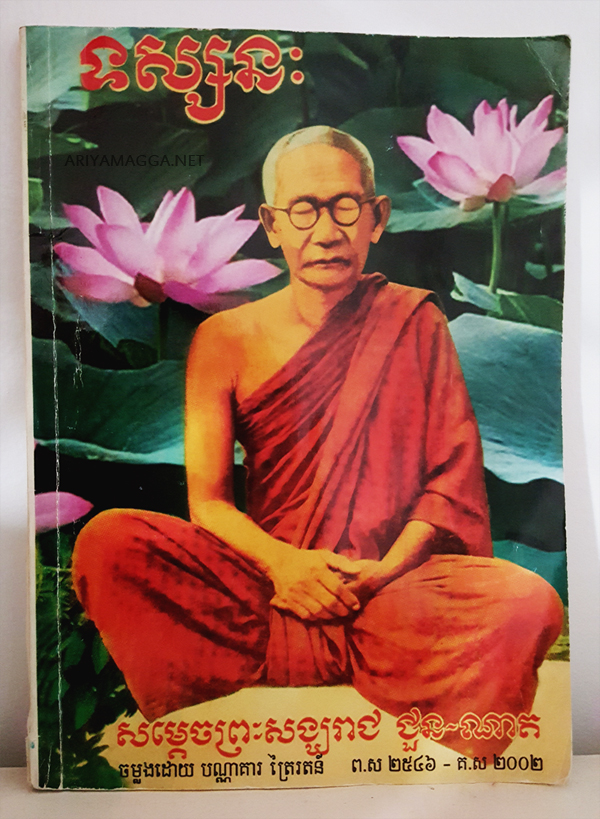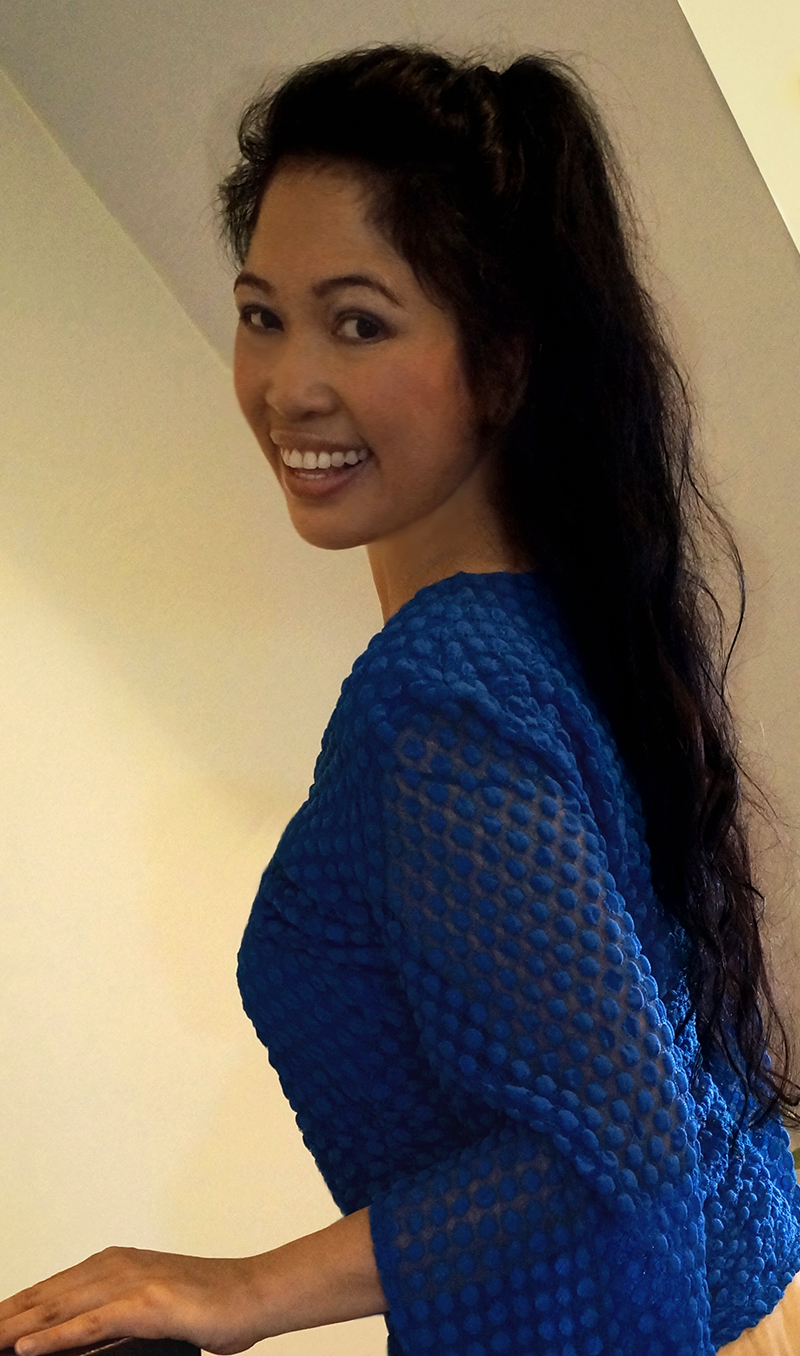-
Comment July 28, 2015
-
The Saw
Comment July 28, 2015by Ajahn Chah
…But when the mind sees and knows everything, it doesn’t carry the Dhamma along with it. Like this saw: They’re going to use it to cut wood. When all the wood is cut and everything is done, they put the saw away. They don’t need to use it anymore. The saw is the Dhamma. We have to use the Dhamma to practice the paths leading to the fruitions. When the job is done, we put the Dhamma that’s there away. Like a saw used to cut wood: They cut this piece, cut that piece. When they’re finished cutting, they put the saw away here. When that’s the case, the saw has to be the saw; the wood has to be the wood.
This is called reaching the point of stopping, the point that’s really important. That’s the end of cutting wood. We don’t have to cut wood, for we’ve cut enough. We take the saw and put it away.
“In Simple Terms: 108 Dhamma Similes”, by Ajahn Chah
translated from the Thai by Thanissaro Bhikkhu.
Access to Insight (Legacy Edition), 2 November 2013
Link source -
The Tail of the Snake
Comment July 28, 2015by Ajahn Chah
We human beings don’t want suffering. We want nothing but pleasure. But actually, pleasure is nothing but subtle suffering. Pain is blatant suffering. To put it in simple terms, suffering and pleasure are like a snake. Its head is suffering; its tail is pleasure. Its head contains poison. Its mouth contains poison. If you get near its head, it’ll bite you. If you catch hold of its tail it seems safe, but if you hold onto its tail without letting go, it can turn around and bite you just the same. That’s because both the head of the snake and the tail of the snake are on the same snake.
Both happiness and sadness come from the same parents: craving and delusion. That’s why there are times when you’re happy but still restless and ill at ease — even when you’ve gotten things you like, such as material gain, status, and praise. When you get these things you’re happy, but your mind isn’t really at peace because there’s still the sneaking suspicion that you’ll lose them. You’re afraid they’ll disappear. This fear is the cause that keeps you from being at peace. Sometimes you actually do lose these things and then you really suffer. This means that even though these things are pleasant, suffering lies fermenting in the pleasure. We’re simply not aware of it. Just as when we catch hold of a snake: Even though we catch hold of its tail, if we keep holding on without letting go, it can turn around and bite us.
So the head of the snake and the tail of the snake, evil and goodness: These form a circle that keeps turning around. That’s why pleasure and pain, good and bad are not the path.
“In Simple Terms: 108 Dhamma Similes”, by Ajahn Chah
translated from the Thai by Thanissaro Bhikkhu.
Access to Insight (Legacy Edition), 2 November 2013
Link source -
Ten Meritorious Deeds
Comment July 28, 2015by Ven. Dr. K Sri Dhammananda
The Buddha taught ten meritorious deeds for us to perform in order to gain a happy and peaceful life as well as to develop knowledge and understanding.
The ten meritorious deeds are:
1. Charity
2. Morality
3. Mental culture
4. Reverence or respect
5. Service in helping others
6. Sharing merits with others
7. Rejoicing in the merits of others
8. Preaching and teaching the Dhamma
9. Listening to the Dhamma
10. Straightening one’s viewsThe performance of these ten meritorious deeds will not only benefit oneself, but others as well, besides giving benefits to the recipients. Moral conduct benefits all beings with whom one comes into contact. Mental culture brings peace to others and inspires them to practise the Dhamma. Reverence gives rise to harmony in society, while service improves the lives of others. Sharing merits with others shows that one is concerned about others’ welfare, while rejoicing in others’ merits encourages others to perform more merits. Teaching and listening to the Dhamma are important factors for happiness for both the teacher and listener, while encouraging both to live in line with Dhamma. Straightening one’s views enables a person to show to others the beauty of Dhamma. In the Dhammapada, the Buddha taught:
‘Should a person perform good,
He should do it again and again;
He should find pleasure therein;
For blissful is the accumulation of good.’
‘Think not lightly of good, saying,
‘It will not come near to me’?
Even by the falling of drops a water-jar is filled.
Likewise the wise man, gathering little by little,
Fills himself with good.’ -
Those standing beside
Comment July 28, 2015 -
Dancing birds
Comment July 28, 2015When it comes to birds, the males tend to have the more glamorous
feather shape, coloration, songs, and dances. Female birds choose
their mate based on how attractive they find them. It is estimated
that one third of all bird owners turn on a radio for their pet when
they leave the house. Source: mspca -
Parrot’s walking style
Comment July 28, 2015Though there is great diversity among these birds, there are similarities
as well. All parrots have curved beaks and all are zygodactyls, meaning
they have four toes on each foot, two pointing forward and two projecting
backward. Most parrots eat fruit, flowers, buds, nuts, seeds, and some
small creatures such as insects. Source: NationalGeographic -
Those days
Comment July 28, 2015 -
Your journey
Comment July 28, 2015 -
Where we must choose
Comment July 28, 2015


















